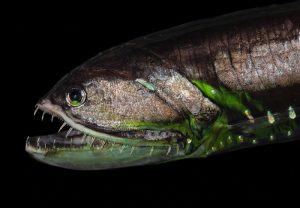Editorials, Opinions and News
Perspectives, Editorials & Opinion
- R. Richmond & K. Buessler. (2023) The future of ocean health. Science Editorial, 381(6661), p. 927.
- Buesseler, K., Leinen, M., Ramakrishna, K., Chai, F., Smith, S., Wells, M., Yoon, J.-E. (2022) Why we need a code of conduct for ocean-based carbon dioxide removal, World Economic Forum, June 29, 2022.
- Buesseler, K.O. (2021) The Power of the Ocean. The Hill, December 28, 2021.
- Buesseler, K.O. (2021) 10 years after Japan's Fukushima Daiichi meltdown, I'm still worried. Newsweek, March 10, 2021.
- Martin, A, Boyd, P., Buesseler, K. et al. (2020) The oceans' twilight zone must be studied now, before it is too late. Nature Comment, March 31, 2020.
- Buesseler, K.O. (2020) The Danger of Creating a Designer Planet. The Economist Group - World Ocean Initiative, January 31, 2020.
- Buessler, K.O. (2019) What I learned from an ocean radioactivity testing projects. Scientific American, March 5, 2019.
- Buesseler, K.O. (2016). 5 years later, Fukushima radiation continues to seep into the Pacific Ocean. PBS Newshour, March 9, 2016.
- Buessler, K.O. (2014). Ocean Radioactivity. Letter to the Editor, New York Times, July 28, 2014.
- Buesseler, K.O. (Oct. 26, 2012). Fishing for Answers off Fukushima. Science Magazine, Vol. 338, Issue 6106.
- Buesseler, K.O. (March 11, 2012). What the Fukushima accident did to the ocean. CNN.
- Buesseler, K.O. (2012). The great iron dump. Nature, 487: 305-306.
- Buesseler, Ken (April 26, 2011). Japan's irradiated waters: How worried should we be? CNN Opinion on-line.
- Buesseler, K.O. (1999). Measuring the "F" in JGOFS? A New Way to Catch the Rain (PDF). U.S. JGOFS News, 10: 2.
WHOI Oceanus Magazine, Press releases & Reports
- A new way to track marine snow 'blizzards': New submersible provides insights into how organic carbon moves through the ocean twilight zone. Oceanus, Sept. 29, 2023 (David Levin).
- An Ocean of Opportunity: Exploring the potential risks and rewards of ocean-based solutions to climate change. Oceanus, Dec. 7, 2021 (Laura Castanon).
- Fukushima and the Ocean: A decade of disaster response. Oceanus, April 1, 2021 (Laura Castanon).
- Chasing Ocean 'Snowflakes:' New devices measure particles with key role in climate change. Oceanus, March 7, 2019.
- Mission to the Twilight Zone: The urgent quest to explore one of Earth's hidden frontiers. Oceanus, April 17, 2018.
- Scientists find new source of radioactivity from Fukushima Disaster, October 2, 2017. News Release from the Woods Hole Oceanographic Institution
- Back to Bikini: Scientists study lingering radioactivity of 1946-1958 nuclear weapons tests. Oceanus, June 5, 2017
- Fukushima Site Still Leaking after Five Years, Research Shows. March 7, 2016. News Release from the Woods Hole Oceanographic Institution
- Fukushima and the Ocean, Oceanus SPECIAL SERIES 2013
- Communication in the Fukushima Crisis: How did officials, scientists and the media perform?
- Radiation and Health Risks: How can we assess impacts and exposures?
- Food Safety and Policy: What's Safe to Eat? How can we Know?
- Tale of the Tuna
- How is Fukushima's Fallout Affecting Marine Life
- Radioisotopes in the Ocean: What's there? How much? How long?
- ABCs of Radioactivity
- Japan's Triple Disaster: Earthquake and tsunami led to release of radioisotopes
- Fertilizing the Ocean with Iron: Should we add iron to the sea to help reduce greenhouse gases in the air? Oceanus, 46(1). Jan. 2008.
- To Fertilize, or Not to Fertilize? Oceanus, Feb. 6, 2008.
- A Journey to the Ocean's Twilight Zone, Oceanus, August 16, 2006.
A conversation with marine biogeochemist Ken Buesseler: A torrent of particles rains down through the ocean's dimly lit regions, providing food for organisms below and sequestering some heat-trapping carbon dioxide from the atmosphere. A WHOI biogeochemist investigates what makes it into the ocean's twilight zone and what makes it out. - Swimming in the Rain, Oceanus, August 16, 2006.
Novel untethered vehicle catches 'marine snow' falling through the sea: At first, critics said it shouldn't be done. Then they wondered whether it could be done. Finally, WHOI scientists and engineers built an innovative device to capture a fundamental but still mysterious ocean phenomenon. - For a fun article about our work, check out this short piece on serving espresso and science on the high seas. (PDF)
- Checking the Forecast for 'Marine Snow', Oceanus, June 10, 2005
- Effects of Ocean Fertilization with Iron to Remove Carbon Dioxide from the Atmosphere Reported, April 2004 News Release from the Woods Hole Oceanographic Institution
- Fertilizing the Ocean with Iron, 1999 Annual Report from the Woods Hole Oceanographic Institution
- Valdez, J.R., Buesseler, K.O. and Price, J.F., A New Way to Catch the Rain. (PDF) Oceanus Fall/Winter 1997.
Projects in the News
- Spotts, P.N., Voyage to ocean's 'Twilight Zone', The Christian Science Monitor, February 12, 2004.
Recent Highlights
Why we need a code of conduct for ocean-based carbon dioxide removal, World Economic Forum, June 29, 2022. K. Buesseler, M. Leinen, K. Ramakrishna, F. Chai, S. Smith, M. Wells, J.-E. Yoon.

The oceans’ twilight zone must be studied now, before it is too late: Exploitation and degradation of the mysterious layer between the sunlit ocean surface and the abyss jeopardize fish stocks and the climate.

The Dangers of Creating a Designer Planet: A call for better understanding of the ocean’s biological processes before attempting to geoengineer climate solutions.
What I learned from an Ocean Radioactivity Testing Project by Ken Buessler, March 5, 2019.
